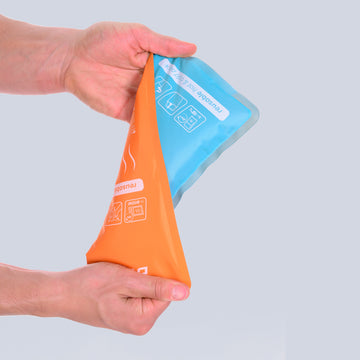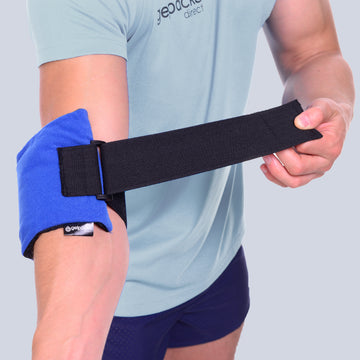How do Ice Packs Reduce Swelling and Inflammation?
Ice packs or cold compresses are a common and effective tool for reducing swelling, particularly after an injury. But how exactly do they work?
How Do Ice Packs Work?
Ice packs work by reducing blood flow to the affected area, which helps to reduce swelling and inflammation. When you apply an ice pack to an injury, the cold temperature causes your blood vessels to constrict, or become narrower. This reduction in blood flow limits the amount of fluid that builds up in the affected area, which can help to reduce swelling
In addition to reducing swelling, ice packs can also numb the affected area and provide pain relief. This can be especially helpful if you've recently sustained an injury and are experiencing discomfort.
What Injuries Can Ice Packs Help With?
Ice packs are often used to help reduce swelling and inflammation after an injury, such as a sprained ankle or muscle strain. They can also be helpful for managing pain and swelling associated with chronic conditions, such as arthritis. Examples:
- Sports injuries (e.g. sprained ankle, muscle strain)
- Accidental injuries (e.g. falls, bruises)
- Overuse injuries (e.g. tendonitis, bursitis)
- Fractures
- Dental injuries (e.g. knocked out tooth)
- Burns
- Insect bites
- Razor burn
- Swelling after surgery or injections
- Inflammatory conditions (e.g. arthritis, bursitis)
What Are the Benefits of Ice Packs for Injuries?
There are several benefits to using ice packs for injury recovery and pain management:
Reduces swelling and inflammation: As mentioned earlier, ice packs can help to reduce swelling and inflammation by limiting blood flow to the affected area. This can be especially helpful in the first 24-72 hours following an injury, when inflammation is at its highest.
Provides pain relief: In addition to reducing swelling, ice packs can also numb the affected area and provide pain relief. This can be especially helpful if you're experiencing discomfort following an injury.
Convenient and portable: Ice packs are easy to use and transport, making them a convenient option for managing pain and swelling on the go.
When Should I Use Ice Packs?
In general, it's recommended to use ice packs for the first 24-72 hours following an injury to help reduce inflammation and swelling. After this initial period, it's generally recommended to switch to heat to help relax tight and sore muscles and increase blood flow to the affected area.
When using an ice pack, it's important to wrap it in a towel to protect your skin from the cold. You should also avoid applying the ice pack directly to your skin for extended periods of time, as this can cause frostbite.
When Should I Use Ice or Heat?
The general rule of thumb is to use ice or cold compress for acute injuries (those that are recent and have occurred within the last 72 hours) and heat for chronic injuries (those that have been present for an extended period of time).
Ice is effective at reducing inflammation and swelling, which are common after a muscle injury. It can also numb the area and provide pain relief. To use ice, wrap it in a towel and apply it to the affected area for 20-30 minutes at a time, several times a day.
Heat, on the other hand, can be used to help relax tight and sore muscles. It can also increase blood flow to the area, which can speed up the healing process. To use heat, you can apply a warm towel or heating pad to the affected area for 20-30 minutes at a time. Read further about how this applies specifically to muscle injuries.
It's important to note that everyone's needs are different, and what works for one person may not work for another. If you're unsure whether to use ice or heat, it's always a good idea to consult with a medical professional.













